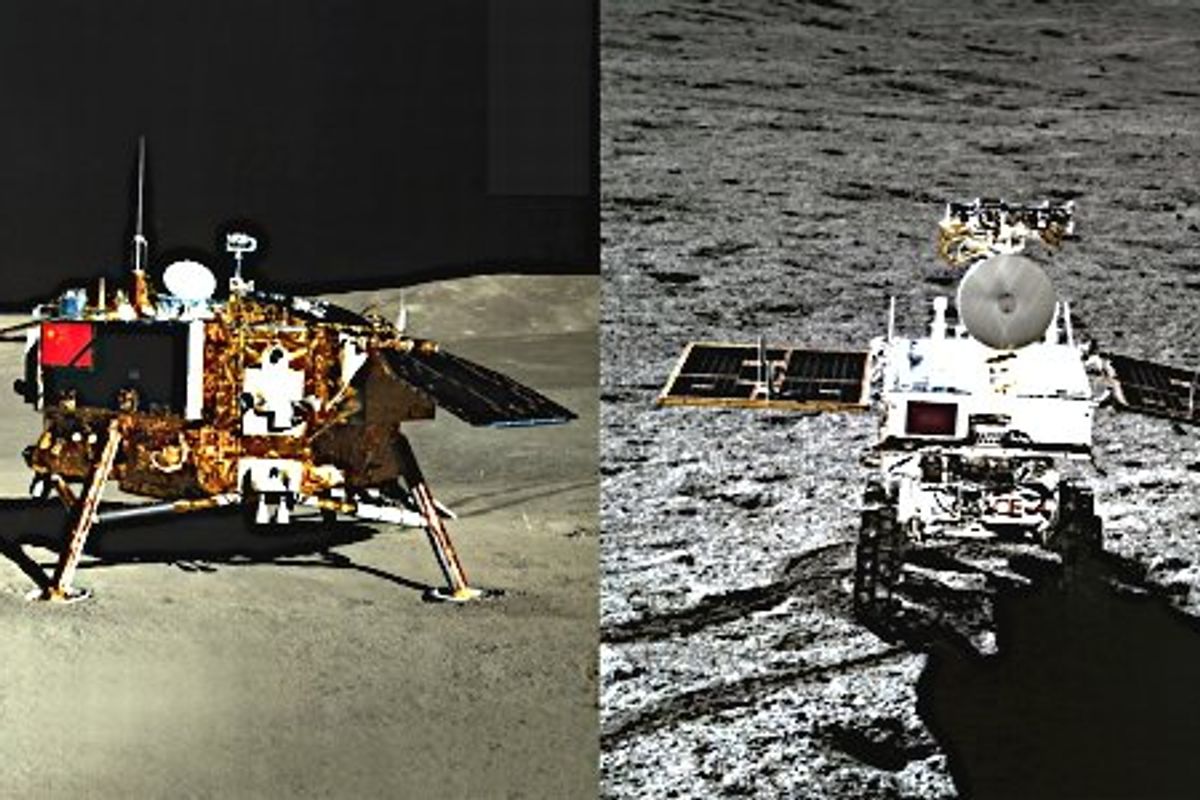'Mysteries Unveiled: Hidden Structures Found on the Moon’s Far Side'
Researchers have revealed billions of years' worth of mysteries hidden under the earth's crust. moon .
For ages, our cosmic neighbour has inspired wonder and bafflement, yet with China’s space efforts, we're beginning to unravel its history.
In 2018, the Chang'e-4 lander from the Chinese National Space Administration (CNSA) made history as the first spacecraft to touch down on the far side—often referred to as the dark side—of the Moon.
Ever since, it has been snapping remarkable pictures of impact sites and collecting mineral specimens, providing valuable insights into the composition of the lunar surface's upper 1,000-foot layer.
Earlier this month, the discoveries from Chang'e-4 were released for all to see, giving everyone an opportunity to explore the rich history of our beloved moon.
The findings, published in the Journal of Geophysical Research: Planets , disclose that the uppermost 130 feet (40m) of the moon's exterior consist of various strata of dust, soil, and fragmented rock.
Buried beneath these strata lies a crater that came into existence when a substantial body collided with the moon. This conclusion was drawn by Jianqing Feng, an astrogeological researcher at the Planetary Science Institute in Tucson, Arizona, who co-directed this groundbreaking study.

Underneath, Feng and his team found five separate layers of lunar lava that once flowed across the surface billions of years ago.
Specialists think that our moon came into being around 4.51 billion years ago due to a collision between Earth and an object roughly the size of Mars, which dislodged part of our planet in the process. Live Science notes.
In the next 200 million years or so, the moon kept getting bombarded by cosmic rubble, resulting in various collisions that created fractures across its surface.
Similar to what occurs on Earth, the Moon's mantle held chambers of molten magma. These chambers seeped into freshly created fissures due to a sequence of volcanic activities, as Feng elucidated.
Nevertheless, the fresh data supplied by Chang'e-4 indicated that as the volcanic rock approached the lunar surface, it became progressively thinner.
[The moon] was gradually cooling off and losing its vigour during its late volcanic phase," Feng stated. "Over time, its energy weakened.

It is known that volcanic activity on the moon ceased between one billion and 100 million years ago, leading to its classification as "largely geologically inactive."
Nevertheless, Feng and his collaborators have proposed that magma might still be lurking beneath the Moon's surface at great depths.
Chang'e-4 still has numerous tasks ahead, and Feng and his team anticipate this as merely the start of their groundbreaking lunar cartography.
The article was initially published on May 2, 2023.
Sign up for our complimentary weekly bulletin
Share your thoughts in our news democracy. Participate in the discussion of this article below.
Comments
Post a Comment